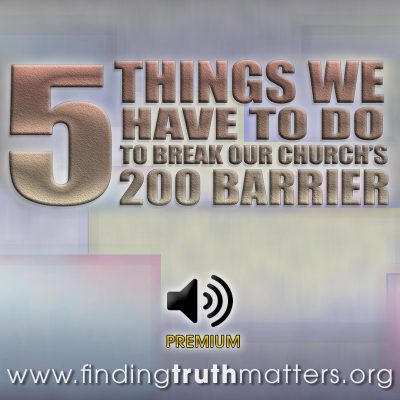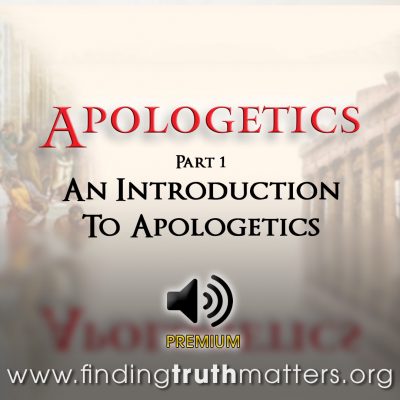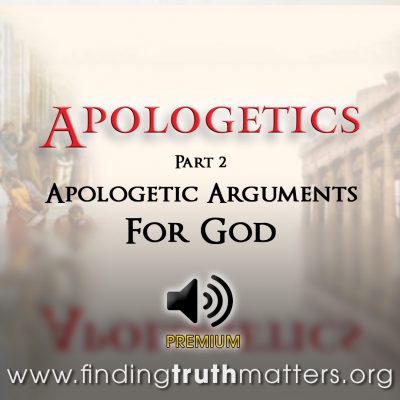home > articles > apologetics > Evidences For The Resurrection of Christ

Christianity stands or falls on the truthfulness of the Resurrection of Christ. Without an historically valid physical resurrection of Christ there is no basis in truth to Christianity. Far from being a doctrine of those ‘fundamentalists’, belief in the literal, physical, resurrection of Christ to immortality is actually what distinguishes a person from an animal.
WHAT DO WE MEAN BY RESURRECTION?
Resurrection is different to resuscitation. While Christ raised several people back to life during His earthly ministry, they all went on to die. Therefore, compared to Christ’s resurrection, all of these should really be categorised as resuscitations, even though in at least one instance there was a gap of 4 days between the death and the resurrection. But Christ’s resurrection from dead was genuinely a unique resurrection because Christ never died again.
We know that Christ being raised from the dead will never die again; death no longer has dominion over Him.
Romans 6:9
Biblically speaking to be ‘dead’ is to have a person’s spirit separated from their body.
For as the body apart from the spirit is dead…
James 2:26
In this sense, to be spiritually dead is for a person to be spiritually separated from God because of their sin.
¶ And you were dead in the trespasses and sins
Ephesians 2:1
And you, who were dead in your trespasses and the uncircumcision of your flesh, God made alive together with him, having forgiven us all our trespasses,
Colossians 2:13
This is an important point. A person’s spirit does not cease to exist even after physical death. Rather, a human spirit will always exist – either in right standing with God or in rebellion to God. Thus, when Christ died He did not die and resurrect merely spiritually because His spirit (like any person’s spirit) did not cease to exist. This counters the idea promoted by the followers of Charles Taze Russell (Jehovah’s Witnesses) who claim that Christ did not rise physically from the dead (which would inevitably lead to the conclusion that Jesus Christ must have been divine).
When Christ rose physically from the dead His battered body was selectively renewed and restored (identifying scars from the crucifixion nails and the Roman spear wound remained). The torturing events leading up to His crucifixion greatly marred His appearance. As a result of His resurrection, His body’s restoration gave Him a slightly different appearance. This explains why the two followers of Christ on the road to Emmaus did not immediately recognise the resurrected Jesus (Luke 24:13ff).
While they were talking and discussing together, Jesus himself drew near and went with them.
Luke 24:15
But their eyes were kept from recognizing him.
Luke 24:16
But when Christ led the cowering apostles in the institution that only He and they would have known about, and then showed the disciples His scarred body, “their eyes were open” and thy recognised the resurrected Christ.
When He was at table with them, He took the bread and blessed and broke it and gave it to them. And their eyes were opened, and they recognized Him. And He vanished from their sight.
Luke 24:30-31
From the resurrection appearances of Christ we observe that Christ’s resurrected body was not subject to the same dimensional constraints that His pre-resurrected body was. Therefore, Christ not only came back to life after having been crucified, His resurrected body could “appear”, “vanish”, and “ascend”. After Christ ascended (best understood as “translated”) to heaven, He was then glorified. The New Testament teaches that Christ’s resurrection was the first (often called “the firstfruits”) of the resurrections of all those who come into right standing with God.
¶ But in fact Christ has been raised from the dead, the firstfruits of those who have fallen asleep.
First Corinthians 15:20
But each in his own order: Christ the firstfruits, then at His coming those who belong to Christ.
First Corinthians 15:23
REBUTTALS TO THE RESURRECTION
The weakest objection to the accounts of Christ’s resurrection commence with a denial that Christ was actually killed during His passion (including His crucifixion). This objection comes in various forms. In one sense, it is a compelling argument if it can be shown to be true because it then trumps any supernatural claim that Christ made for His deity.
SWOON THEORY – This version of the Christ-did-not-actually-die objection asserts that Jesus passed out (swooned) and was mistaken for dead by the Romans. He was taken down from the Cross and laid in the tomb and then over 3 days recovered.
This objection holds no credibility. The Romans were experts at execution. It was not uncommon for victims to die at the hands of the Romans before they could even be crucified. The whipping, scourging, and beating meted out by the Romans prior to crucifixion was known to kill its victims. When the beaten and humiliated victim was then crucified, he was nailed on the cross and left exposed to the elements usually for days. Eventually the crucified victim would suffocate being unable any longer to hoist themselves up on their pierced feet to enable their lungs to fill with enough air. In Christ’s case, the soldiers were about to break His legs to hasten His asphyxiation (due to the sacred holiday the next day) but it wasn’t necessary because He was already dead. There is just no way a Roman soldier would commit such an oversight to mistakenly think that his prisoner to be executed was dead when in fact he wasn’t. Such a mistake would mean death for the soldier.
MISTAKEN IDENTITY – This theory asserts that the Romans arrested and tortured the wrong person while mistakenly thinking that they were dealing with Jesus of Nazareth. This is the Islamic view (they assert that the Romans crucified Judas and not Jesus). After the stand-in Jesus was buried, the hiding Jesus re-entered the scene thus giving the false impression that He had risen again from the dead.
This theory has no evidential support. There is no way that the Jewish authorities who called for Christ’s death would have accepted such a glaring mistake. They were the first ones to interrogate Jesus before the Romans battered Him. They were familiar with Jesus due to their dealings with Him previously. From Christ’s initial imprisonment by the Temple Guards, He was placed into the custody of the Romans who were not in the habit of losing manacled prisoners in their charge. The Jewish authorities also witnessed Christ’s crucifixion and could testify that this was indeed Jesus. There is no doubt that the One who was crucified as Jesus of Nazareth was Jesus of Nazareth.
HALLUCINATIONS – Some have suggested that the post-mortem appearances of Christ can be explained as hallucinations by those who in their religious hysteria claimed to see the risen Christ.
Mass hallucinations are impossible. Christ appeared to individuals, small groups and large crowds, inside and outside.
None of these broad objections to the resurrection of Christ are credible. On the other hand, here are 8 reasons why the resurrection of Christ is very credible.
1. The Empty Tomb –
The body of Christ is still missing! All the Jewish or Roman authorities had to do to counter the reports that Christ had risen from dead was to produce the dead body of Christ. They couldn’t.
2. The Record of Post-Mortem Appearances of Christ –
This is summarised in First Corinthians 15.
3. The Change in the Cowering Apostles To Courageous Witnesses –
All but one of the apostolic witnesses of Christ’s resurrection suffered cruel deaths are martyrs because they would not deny that they had seen the resurrected Christ.
4. The Conversion of Saul of Tarsus to Paul the Apostle –
Paul’s conversion from a persecutor of Christians to becoming a Christian was because he saw the resurrected Christ.
5. The Changing of the Day of Worship from Saturday to Sunday –
This radical change came about to commemorate the resurrection of Christ who rose on Sunday.
6. The Establishment and Preservation of the Church –
This is only possible if Christ literally, physically rose again from the dead.
7. The Day of Pentecost –
The outpouring of the promised Holy Spirit was contingent upon the physical resurrection of Christ. This event was witnessed by thousands of people and is recorded in Acts 2. The resultant baptism in the Holy Spirit is still available today.
8. The Conversion of a Sinner – the possibility of spiritual transformation is only possible if the claims of Christ about the Holy Spirit’s regeneration were validated by His resurrection from the dead. This experience of conversion (being “born again”) is freely available today for all who surrender to Christ.
The Resurrection of Christ is historically verifiable and has led many skeptics to renounce their skepticism about the God of the Bible. It has changed my life and continues to buttress my faith. Ultimately the reality of Christ’s resurrection is empirically testable through a prayer to Him to change your heart and life.
© Dr. Andrew Corbett
April 10th 2010, writing from Legana, Tasmania.
This article may be copied and distributed if due credit is given to the author, the article is not altered, and the website- https://www.findingtruthmatters.org – is hyperlinked or referenced.
-
Sale!

5 Things We Need To Do To Break Our Church’s 200 Barrier, Premium Audio
Original price was: $1.75.$0.95Current price is: $0.95. -
Sale!

A Morning With Izaak Walton – The Compleat Man, Premium Audio
Original price was: $1.75.$1.25Current price is: $1.25. -
Sale!

Apologetics Part 1 – Introduction To Apologetics, Premium Audio
Original price was: $1.75.$0.95Current price is: $0.95. -
Sale!

Apologetics Part 2 – The Apologetic Arguments For God, Premium Audio
Original price was: $1.75.$0.95Current price is: $0.95.









































0 Comments